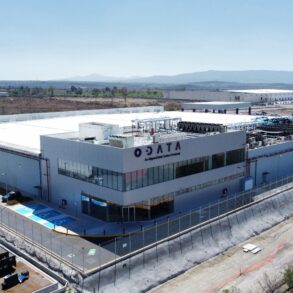Why regional Data Center network capillarity matters for your IT
5 minutes readingCompanies increasingly rely on Data Centers to store and manage their critical systems and information. In this scenario, having a broad regional capillarity in the Data Center network will undoubtedly be a watershed for any organization. The practice helps the constant improvement in the overall performance of IT, reducing latency and bettering the user experience.
Indeed, as businesses accelerate their digital evolution journey, the demand for reliable and efficient Data Centers becomes more urgent than ever. Thus, having access to an interconnected network of servers insightfully located in regions as strategic as the Americas offers business leaders a unique solution to this challenge.
In fact, with this distributed model, providers specializing in this type of service are able to guarantee maximum performance and uptime.
Furthermore, it’s no secret that the success of any company today depends on its ability to leverage technological innovations to gain a competitive advantage. Therefore, betting on the regional capillarity of the Data Center network is one of the most effective strategies to help them achieve this goal.
Want to know more about the advantages of this model? Read below:
What is regional capillarity in a Data Center network?
When it comes to Data Centers, the term ‘regional capillarity’ can be understood as a mesh of interconnected Data Centers strategically located in different regions – so that high performance in data processing and storage resources can be provided.
As a rule, this network is designed to offer redundancy and failure mitigation mechanisms (failover), guaranteeing companies’ continuous availability of their data and systems.
Consequently, in this case, network capillarity refers to the ability to distribute data and applications to the most appropriate Data Center, based on location and network traffic, among other factors.
Why is regional capillarity important for your company?
The geographic diversity of a Data Center network is fascinating since it allows organizations to process and store data in facilities that are physically closer to their users. As a result, you get not only reduced latency but a compelling improvement in overall network performance.
Such an attribute is significant for businesses operating in multiple regions or having customers located in different parts of the world. By distributing data and applications across multiple Data Centers, companies can ensure that employees and customers have fast and reliable access to their systems, channels and services, no matter where they are situated.
The regional capillarity of the Data Center network also contributes to improving the user experience, consequently increasing the productivity of the teams, as well as customer satisfaction and loyalty. With faster access to data and systems, the consumer is more likely to become more deeply involved with the company and certainly will prefer it when purchasing products and services.
In addition, the redundancy and failover mechanisms of the network ensure that data and applications are always available, even in the event of a crash or any possible interruption in the system. This can help companies avoid costly downtime, to maintain uptime and their reputation for reliability.
For reasons like these, the capillarity of the Data Center network is a critical component of the modern IT infrastructure, as it can provide businesses with a competitive advantage by improving network performance, reducing latency and improving the user experience.
How the capillarity of the Data Center network works
The concept of capillarity is mainly attributed to the connection of several Data Centers, in different regions, to create a network that provides high-performance data processing and storage resources. These campuses are interconnected through high-speed networks in order to allow the rapid distribution of data and applications over the network, improving its performance.
Here, the strategic location is a critical aspect. Data Centers are usually installed in regions close to large populations or business centers, reducing the time data takes to travel between the client and the servers. Furthermore, with this practice, you can ensure that data and applications are always available, even during a natural disaster or other disruptive event.
Redundancy and fault mitigation mechanisms are also crucial components of the regional capillarity of a Data Center network. Here, redundancy is achieved by replicating data and applications across multiple centers, so that if one of them goes down, information and systems can be accessed from another. Failover mechanisms ensure that, if a Data Center goes down, traffic will be automatically redirected to another, so there is no service interruption.
ODATA and Aligned: expansion of the Data Center network across the Americas
As we have seen, having the support of a provider specialized in Data Center services, which offers a robust regional capillarity in its network, brings several advantages to companies. And in addition to the proven quality of deliveries, this is one of the most significant benefits customers can have with the acquisition of ODATA by Aligned Data Centers, a leader in technological infrastructure that offers at-scale, innovative, sustainable and adaptive Data Centers.
The company also offers Build-to-Scale solutions for global hyperscale and large enterprise customers. With the recent completion of the ODATA acquisition, Aligned is positioned among the largest operators of private Data Centers in the Americas, with a capacity that encompasses more than 2.5 GW of critical capacity in more than 40 sites (when all are in operation ).
“Driven largely by the needs of hyperscale enterprises, cloud service providers and government customers, the demand for scalable and energy-efficient infrastructure continues its upward trajectory in Latin America. Therefore, joining forces with an established Data Center provider whose focus is on strategic scale, innovation and sustainable design could not be more timely.”
Andrew Schaap
CEO of Aligned Data Centers
With operational facilities strategically located in Brazil, Chile, Colombia and Mexico, as well as new projects under development in other Latin American countries, ODATA is among the fastest-growing hyperscale Data Center platforms in the region.
Besides the advantages of expanding the network, the similarity of the culture of disruptive innovation, environmental and social values and the dynamics of collaborative work shared by the companies benefits the teams – now unified on two continents – in addition to several growth opportunities for customers.
“The acquisition immediately expands not only our Data Center infrastructure and capacity portfolio but also the capital and capabilities to help our customers scale in the Americas. Thus, they will be supported by an advanced supply chain methodology and a refined land and energy strategy, which accelerates market positioning at an unknown speed in the sector”, explains Ricardo Alário, CEO of ODATA.
Sustainability
Incrementally to the benefits of the network’s capillarity throughout the Americas, the robust investments in renewable energy being carried out by ODATA are not only consistent with Aligned’s ESG objectives but also directly benefit its customers interested in bettering sustainability indicators.
As an example, to compose a path to supply 100% green energy and finally become a self-generator of renewable energy for its Data Centers in Brazil, ODATA recently acquired a minority stake in Omega Energia’s 212 MW wind farm, located in Xique-Xique, Bahia. As a result, currently, around 90% of the energy consumed by the company’s servers is renewable.
LEARN MORE about the acquisition of ODATA by Aligned Data Centers here.
Do you want to benefit from the advantages offered by one of the largest Data Centers network
in the Americas?
Exclusive E-BOOKS
to help you learn more about the world of colocation.

Related Posts
SUBSCRIBE TO OUR NEWSLETTER






